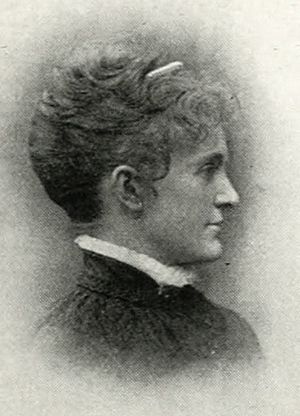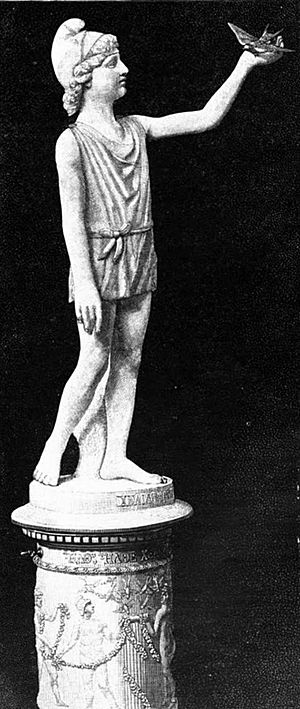Louise Lawson facts for kids
Louise Lawson (born 1861, died 1899) was an important American sculptor. She was one of the first women in America to have a full-time job as a sculptor. Her art style was called Neoclassical. This means it was inspired by ancient Greek and Roman art.
Contents
Early Life and Art Training
Louise Lawson was born in Cincinnati, Ohio. Her father, L. M. Lawson, was a dean at the Medical College of Ohio. Louise's mother died when she was young. Her father taught her at home instead of sending her to school.
Louise became interested in art very early. She studied art at the Art Academy of Cincinnati. Her teachers there included Louis Rebisso and Thomas Satterwhite Noble. Later, she moved to New York for more training. She studied at Cooper Union and learned from sculptor John Quincy Adams Ward.
After her studies in the United States, Louise traveled to Europe. She spent three years in Paris, France, learning from the famous sculptor Auguste Rodin. Rodin suggested she continue her studies in Italy. She then spent three more years studying art in Rome and Perugia, Italy. Her first known sculpture, Il Pastore, was created while she was in Rome.
Louise Lawson's Art Career
When Louise Lawson returned to the United States in the late 1880s, she opened her own sculpture studio in New York. She started showing her art and getting paid for her work. This made her one of the first American women to have a professional career as a sculptor.
Louise worked in a Neoclassical style. This style often looks back to the art of ancient Greece and Rome. She created sculptures using both marble and bronze. People often compared her work to that of Harriet Hosmer, another famous sculptor who also studied in Rome. Louise Lawson's career was cut short because she passed away when she was only in her late 30s.
Famous Sculptures by Lawson
One of her most famous works is a bronze statue from 1891. It is a memorial to Congressman Samuel S. Cox. This statue was first placed near his home in New York City. Today, you can see it in Tompkins Square Park. The sculpture shows Cox giving a speech. Some people thought it did not look much like him.
Louise Lawson also created marble sculptures inspired by books and poems. Ayacanora is a life-sized statue. It shows an Indian heroine from the novel Westward Ho! by Charles Kingsley. Another work, The Origin of the Harp, refers to a poem. This poem had the same title and was written by the Irish poet Thomas Moore.
The Rhodian Boy is another marble sculpture. It is a tribute to Classical sculpture. This means it honors the beautiful art from ancient times.
In 1886, one of her marble sculptures, The Shepherd, was lost. It was being shipped from Italy to the United States. The ship, the French steamship Burgundia, sank after crashing into another ship. This happened in the Bay of Naples. In 1890, a bronze relief sculpture of a fencer was placed at the New York Athletic Club.
Notable Sculptures
- Il Pastore (early 1880s)
- Ayacanora (mid 1880s)
- The Origin of the Harp (mid 1880s)
- The Rhodian Boy (mid 1880s)
- Samuel S. Cox (1891)



